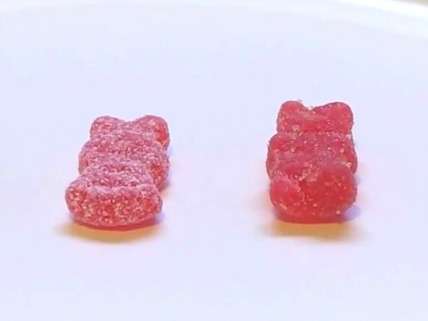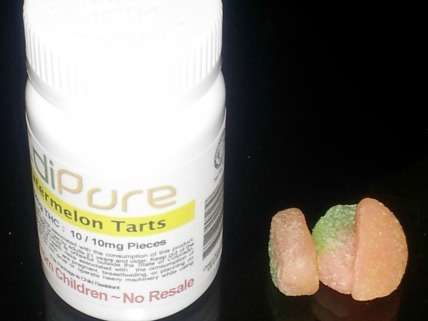Ban on THC-Infused Gummy Bears Advances in Colorado
The bill also covers candy shaped like fruit or people but not moons, stars, hearts, or marijuana leaves.

A bill that received initial approval from the Colorado House of Representatives on Friday would ban marijuana edibles in the shape of fruits, animals, or people. This is the latest attempt by Colorado legislators to prevent accidental ingestion of cannabis by children who mistake THC-infused foods for ordinary treats. Like the other measures, it probably will not have much of an impact on the problem it is supposed to address.
Marijuana edibles are aleady clearly labeled as such, and a rule that takes effect on October 1 requires that all packages bear a universal symbol: an exclamation point above the letters THC inside a diamond. Other rules require that edibles be sold in child-resistant containers. But what happens if a child comes across an edible after it's removed from the package? A 2014 law requires that edibles have a distinctive appearance outside the package "when practicable." But implementing that rule for the wide range of edibles, which include liquids, soft candies, granola, and other items that are difficult or impossible to mark, proved impracticable. In 2014 the state Department of Public Health and Environment floated the idea of banning all edibles except for tictures, lozenges, and hard candies but quickly withdrew the recommendation after strong objections from the industry.

The latest proposal is aimed mainly at THC-infused gummy bears and fruits, which are popular with adults but have raised concerns because outside the package they look exactly like the conventional versions. Since the bill, H.B. 1436, applies only to edibles shaped like fruits, animals, or people, gummy candies that look like marijuana leaves, geometric shapes, moons, stars, hearts, etc., would still be allowed. The practical impact is therefore likely to be minimal. This bill is more about eliminating products that make legislators uncomfortable than it is about preventing accidental ingestion.
Marijuana-related calls to the Rocky Mountain Poison and Drug Center (RMPDC) more than doubled after legalization, from 109 in 2012 to 227 in 2015. Last year 49 of the marijuana calls—about a fifth of the total—involved children 8 or younger.
Marijuana still accounts for a tiny fraction of the 50,000 or so calls the RMPDC receives each year. Although the RMPDC does not report outcomes, data from the Washington Poison Center suggest they are rarely serious. Children's Hospital in Aurora (a Denver suburb) counted 19 admissions of children who had ingested marijuana from 2009 through 2014, or an average of about three a year.
The most straightforward solution to this problem, of course, is to make sure that marijuana edibles are kept away from children. If that does not happen, the fact that gummy candies are shaped like stars instead of bears is not going to make much of a difference.


Show Comments (23)